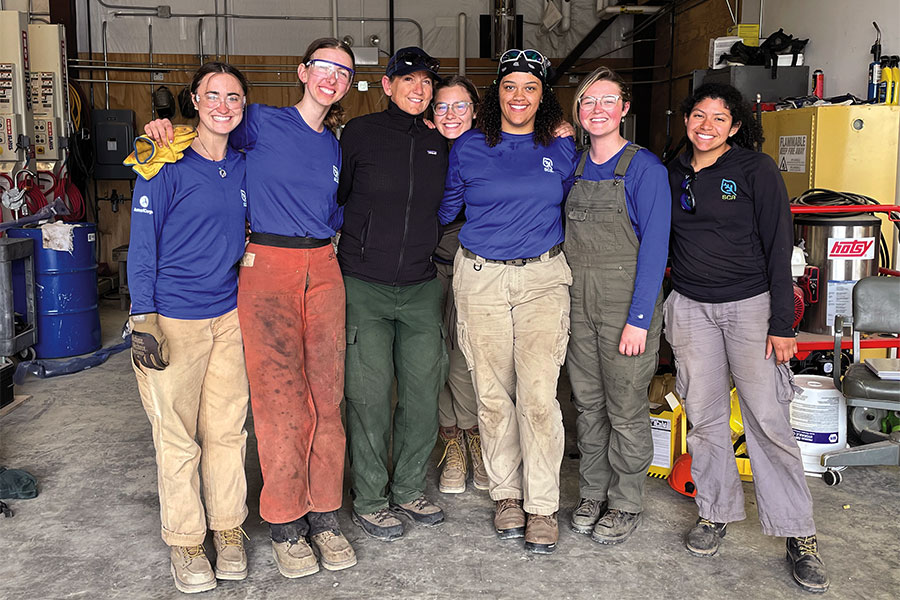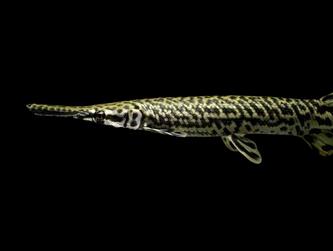
Millions of acres of U.S. lands are burned each year in wildfires. In the summer of 2022, nearly half of those acres were in Alaska. In fact, more of the Bristol Bay region in southwest Alaska burned during the summer of 2022 than burned collectively in the same area between 1950 and 2021.
Bristol Bay is where University of Minnesota sophomore Amital Shaver spent her summer learning to fight wildland fires. Shaver was part of a newly launched, all-women conservation corps crew hosted by the National Park Service (NPS) in conjunction with the Student Conservation Association. After a successful pilot program in 2021 in Yosemite and Grand Teton National Parks, this past summer NPS sent an all-female crew, including Shaver, to Alaska.
Only 5 percent of wildland firefighters are women, and only 2 percent are in leadership positions, says Missy Forder, a national fire planner for NPS. Forder, who has been fighting fires with NPS in 25 different states for more than 20 years, says increasing gender and ethnic diversity is a key goal for NPS and the impetus behind the all-women crew program. “The best teams I’ve been with have been diverse groups where there’s gender parity,” says Forder.
Shaver didn’t know much about fire before applying for the NPS program, but the College of Biological Sciences biochemistry major knew she wanted to be outdoors and work with her hands. “Being from the Midwest, fire is not a really big part of the culture,” says Shaver, who grew up in St. Louis Park, MN. “I think for folks out west, that’s much more a front-of-mind thing.”
It was the concept of an all-women crew that drew Shaver in and then hooked her. “The female mentors and instructors that we were so lucky to have access to, like Missy [Forder], [were] absolutely incredible,” says Shaver. “Just to see such powerful women role models in fire who made these careers and who stood their ground and didn’t have to sacrifice being themselves.”
It was a busy summer for Shaver and the six other college students on her crew. It began with wilderness training at Chugach State Park, south of Anchorage, followed by conservation work skills training, work safety, and trail building. Then the group was off to King Salmon, AK, and Bristol Bay, working with NPS to get their chainsaw certification and earn their “red cards”—a certification required to respond to an incident. Eventually, the group settled in Katmai National Park and Preserve where they felled their first trees and prepared for their “pack test,” required for certification to go out on fire assignment, says Shaver. The pack test requires carrying a 45-pound pack for three miles in under 45 minutes.
While Shaver says their training was “very job specific,” it also provided a wide lens into the science behind the work that’s done to mitigate wildland fires: everything from how fire ecology works to the financial logistics of wildland firefighting. “A lot of us on the crew had a science background. And, while you’re not applying it day to day when you’re running a chainsaw, understanding the bigger picture of the work that you’re doing and how fire fits into the disturbance regime of an area, or how cutting down trees or creating this shaded field break is affecting even the wildlife, [is important],” she says.
Shaver calls her all-women firefighting experience “invaluable,” and says she’s excited about a culture shift “where women don’t have to prove themselves five times more than any guy just because they’re a woman.”
“Having this fire experience under our belts we can, with humility still, walk in with more confidence and be able to say, ‘Yeah, I know how to do this, and I’m just as capable as anyone else,’” says Shaver. “‘I’m gonna work hard as hell and I deserve to be here just as much as anyone else.’”
In the end, Shaver—like Forder two decades before—was bitten by the fire bug. She’s already started applying for fire jobs for the summer of 2023.
This story was adapted from the U of M Alumni Association's Minnesota Alumni magazine.
- Categories:
- Agriculture and Environment





